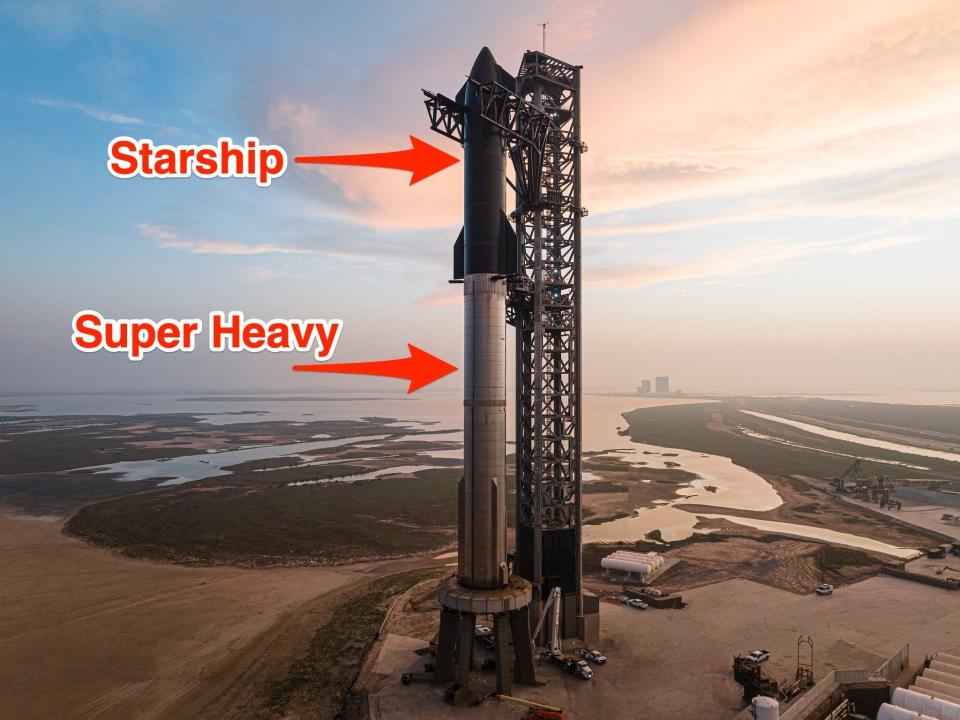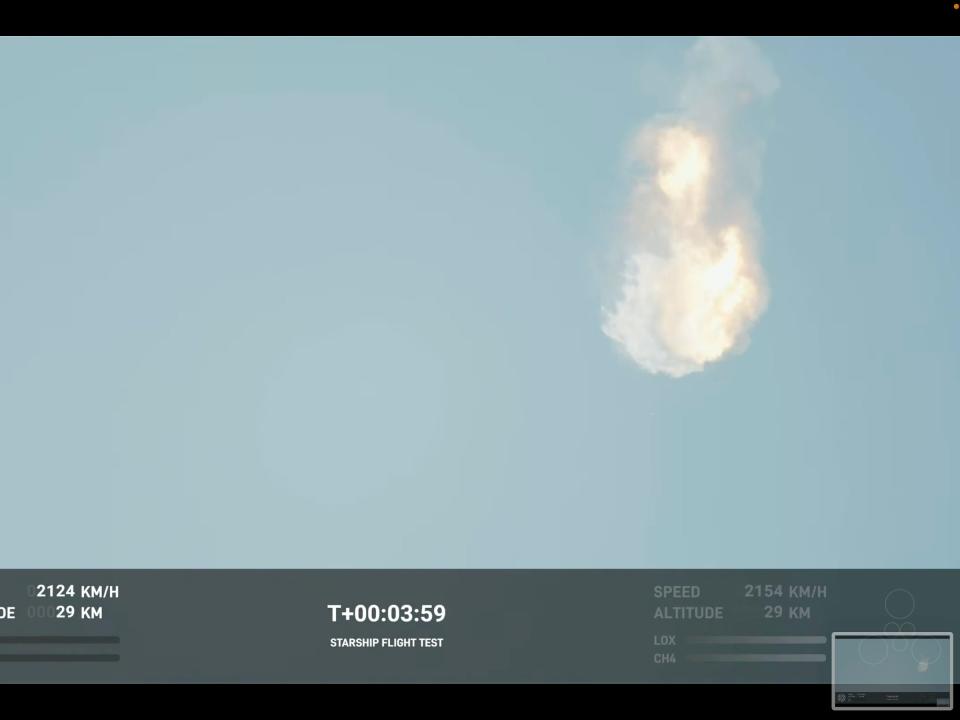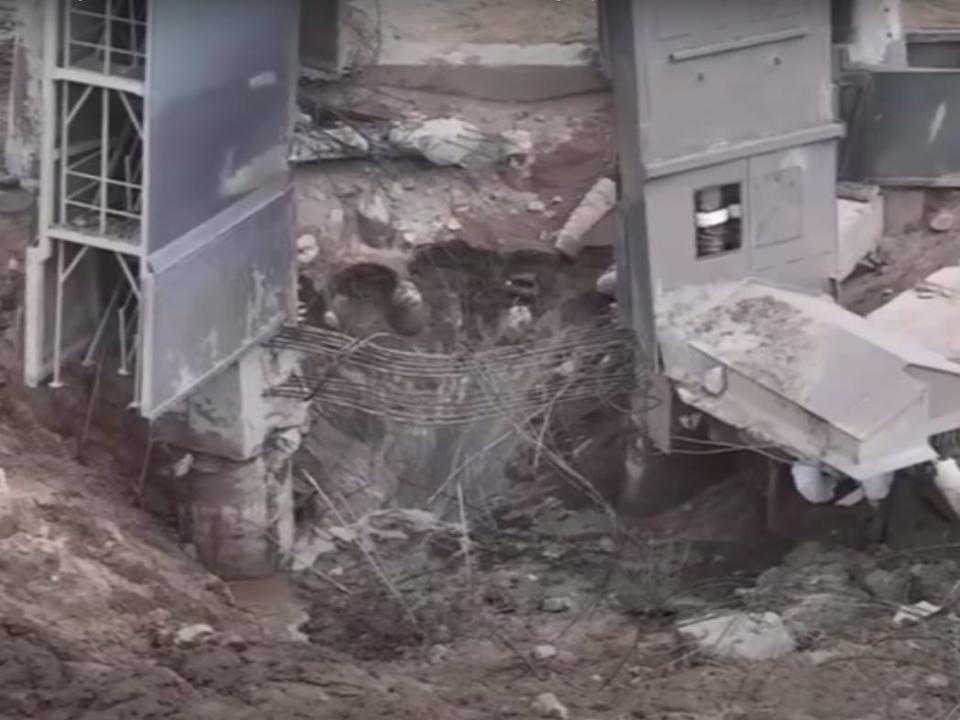Elon Musk is gearing up to launch his Starship mega-rocket in August. Here are 2 changes SpaceX made to stop it exploding.

SpaceX is adding changes to Starship's launchpad and rocket ahead of its next launch.
The hope is the changes will keep the rocket from blowing up and spraying debris, like it did last time.
This includes adding a blast-proof system to the launchpad and vented heat shields on the booster.
Elon Musk's SpaceX is rolling out some changes to its Starship mega-rocket ahead of an upcoming second launch.
The hope is that these modifications will keep the rocket not only from blowing up, but also from raining debris over the area, as it did last time.
SpaceX is now gearing up for a second launch, which CEO Musk has predicted could happen by end of August.
Here are two crucial changes the firm has made to its Starship launch system, and why it hopes it'll keep the rocket from failing.
1. The spaceship will blast the booster away with its plasma engines
When it is fully integrated, Starship is made up of two core elements: a booster called "Super Heavy" and the bona fide spaceship, which is called Starship that sits on top of the booster.

SpaceX's first fully integrated launch for Starship in April didn't go exactly as planned after the rocket was destroyed mid-air.
It's precisely that connection that failed on Starship's first launch, as the rocket was unable to separate from its booster, sealing its fate as it was destroyed over the Gulf of Mexico.

In a message on X Friday, SpaceX showed its latest modification to the booster.
Per the post, Starship will now use a process called "hot staging" to separate the rocket from the booster. This means the engines of the spaceship will "ignite to push the ship away from the booster," per SpaceX.
Because of this change to the launch, SpaceX had to add a "vented interstage and heat shield" to protect the booster.

"The superhot plasma from the upper-stage engines has gotta go somewhere," Musk told journalist Ashlee Vance in a discussion on X on June 24, per Space.com.
The addition, he said, "is almost all vents," which allows the plume from the upper stage of the rocket to "go through the sort of vented extension of the booster and not just blow itself up," said Musk.
2. A water-drenched "flame deflector" launchpad

SpaceX has also been working to improve the resilience of its launchpad's mount. To do so, it's rolling out a "water deluge system" to protect against the intense heat and force that blew the mount last time.
Musk compared the system to a "gigantic upside-down shower head," he told Vance, per Space.com.
—SpaceX (@SpaceX) July 28, 2023
Musk has also previously said SpaceX would reinforce the mount with 35,300 cubic feet of "high-strength concrete" at the mount.
The system aims to avoid the damage done to the mount. During its April launch, the rocket blasted through its launchpad, sending fragments of concrete and other debris flying around the launch site in Boca Chica, Texas — causing the ire of local environmental groups who filed a lawsuit against the Federal Aviation Administration over their oversight of the launch.
Bloomberg previously reported the launch also ignited a 3.5-acre fire in a state park to the south and spread debris across 385 acres, including some state park land.

The water-deluge system raised concerns of its own. CNBC reported the water could constitute "industrial process water" which is tightly regulated in the US.
The Texas Commission on Environmental Quality (TCEQ) told CNBC that SpaceX had not applied for permits to regulate that water, adding there was "no determination" made as to whether the activity violated environmental laws
The rocket won't be able to fly before FAA approval
These are only two of the "more than 1,000 changes" that have been made to the rocket since its first launch, Musk told journalist Vance on June 24, per Space.com.
The CEO is now vying for a second launch window by the end of August, he said in June.
If successful, Starship would be the biggest rocket to ever fly successfully to space. A successful launch would also be crucial to NASA's Artemis mission to the moon, as Starship has been tagged to carry astronauts for a leg of the journey.
But the rocket won't be able to fly before the FAA gives SpaceX the go-ahead. The Administration has told Space.com it is still reviewing the mishap report SpaceX filed about the April 20 launch.
"When a final mishap report is approved, it will identify the corrective actions SpaceX must make," FAA officials said in an emailed statement to Space.com this week. "Separately, SpaceX must modify its license to incorporate those actions before receiving authorization to launch again."
Read the original article on Business Insider

